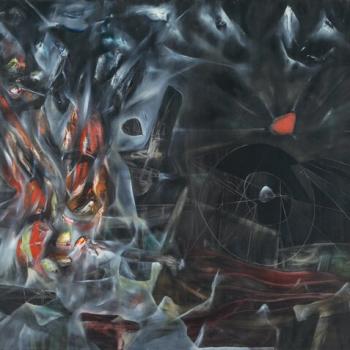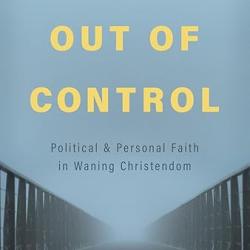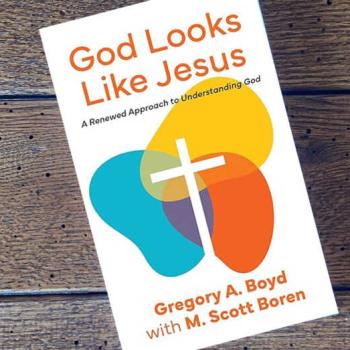Whatever Happened to the New Age Movement (NAM)?
If you didn’t live through the 1980s or were too young to notice cultural movements and events, you may not remember or even know about the so-called “New Age Movement” (henceforth “NAM”). Even if you did, and were aware of the hype surrounding it, you may never have figured out what it was. You wouldn’t be alone. Everyone talked about it, but few seemed to know what it was—beyond Shirley MacLaine’s shenanigans. (She talked openly on television and wrote books about her occult beliefs and experiences including past life regressions.)
New Age bookstores opened up everywhere (at least one in every major city and sometimes several in a city). Major chain bookstores stocked their shelves with New Age books and sometimes paraphernalia (e.g., magical crystals). Every television talk show hosted New Age guests such as J. Z. Knight channeling Ramtha. For those interested in looking deeper into the phenomenon it wasn’t too difficult to find an intellectual, even philosophical, level under the shallow surface of psychic phenomena. New Age thinkers such as George Trevelyan, David Spangler, and Marilyn Ferguson wrote books about metaphysics and theology that all tended toward monism or pantheism. There was a decidedly Gnostic flavor to those that claimed to be Christian in some sense and a Hindu or Buddhist flavor to those inspired by Eastern philosophy and mysticism. Many attempted to blend them together.
One thing can be said with certainty: the NAM was eclectic. Everywhere New Age gatherings included Wiccans and believers in extra-terrestrials and dabblers in quantum physics and crystal-gazers and…you name it. If it was somehow associated with paranormal beliefs and experiences it came and was usually welcomed. The only things NAM leaders excluded were orthodox Christians (especially those they labeled fundamentalists) and Satanists. Many orthodox Christians pointed at the NAM and repeated G. K. Chesterton’s maxim that when people stop believing in God they don’t believe in nothing; they believe in everything.
Scholars studying the NAM generally concluded that it was simply the exoteric manifestation of something that had previously been mostly esoteric—what sociologist of religion Robert Ellwood called “the alternative reality tradition in the West.” He demonstrated (in books such as Religious and Spiritual Groups in Modern America) that all the ingredients in the New Age recipe had past lives in groups such as Theosophy, Rosicrucianism, the Mighty I AM Movement, spiritualism, Swedenborgianism, Vedanta, The Self-Realization Fellowship, etc., etc. The roots of the NAM were deeply embedded in a thick undergrowth of religious and spiritual beliefs and technologies derived from occultism and Eastern mysticism.
What explained the seemingly sudden explosion of interest in this alternative reality tradition manifested in the NAM? Of course, some observers said it was a delayed reaction to the 1960s cultural revolutions in Europe and America that made almost anything possible if not mainstream. Others saw it as one manifestation of postmodernism. One theory was given by theologian and scholar of American religion Martin Marty: “When the policemen of modern secularism become too heavy with their naturalistic nightsticks the people start smuggling the gods in brown paper bags.” (I heard him say this several times in answer to questions about the popularity of occultism and Eastern mysticism.)
My interest in the NAM grew naturally enough out of my annual courses on cults and new religions. While working on my Ph.D. in Religious Studies at Rice University I taught a course entitled “Deity, Mysticism and the Occult.” I didn’t invent the course; it was already in the undergraduate catalog, but I did volunteer to teach it and it attracted the maximum number of students possible. Mostly we read Ellwood and listened to guest speakers such as Hare Krishnas, Sufis, J. Gordon Melton (on Wicca and neo-Paganism), and members of the local chapter of Eckankar. Soon after that the NAM exploded on the scene. I saw it as simply a label given to the growing interest in all things esoteric, occult and mystical. I was already well aware of the alternative reality tradition in the West so it was easy for me to see that as underlying the NAM.
My first full time teaching position was at Oral Roberts University (1982-1984). While teaching overloads in the undergraduate theology department (and being paid a salary impossible to live on) I taught a version of “Deity, Mysticism and the Occult” called “America’s Cults and New Religions.” Again, as at Rice, it attracted the maximum number of students. But others stayed far away. I remember on encounter with two super-spiritual students in the university’s bookstore. They saw me looking at one of my textbooks and told me that demons inhabit such books and that even opening one could make a person vulnerable to demon oppression if not obsession. Unsurprising, they were transfer students from a local Bible college steeped heavily in what I call “Christian occultism”—obsession with all things demonic. I was unable to find many speakers from the alternative reality tradition in the West or from the NAM, but I was able to coax the pastor of the local Unity church to speak to my class about New Thought. (After all, there were real affinities between Unity’s theology and the prosperity gospel being touted by many people in Tulsa including chapel speakers at ORU.)
Around that time I became aware of the beginnings of the NAM, even though it was virtually unheard of (at least “above ground”) in places like Tulsa. However, the local press was full of articles about a New Age intentional community being developed near Tulsa. It was populated mainly by outsiders (many from California) who thought that particular locale was a spiritual “hot spot.” That may have been the first time I heard (or read) the term “New Age Movement.”
During my fifteen years teaching theology at Bethel College in Minnesota I taught annually a course on America’s Cults and New Religions. It was always closed early due to a full complement of students registering for it the first day of registration. I allowed in as many as thirty students—so that it would not be just a lecture course. The course became known around campus as “Unsafe Sects”—something that didn’t hurt interest in it.
The NAM became a major focus of the course, although it also included study of most of the major, well-known non- or pseudo-Christian cults and sects. I invited speakers from many “alternative traditions” into the class and led the class on field trips to churches, temples, meditation centers, New Age bookstores, etc. When parents complained I informed them that 1) I never required any student to be present when an occultist (e.g., a Wiccan) spoke or to go on a field trip, and 2) it is better for students to encounter these people for the first time in a safe environment like Bethel where I could explain what’s wrong with their beliefs and practices from a Christian perspective than to encounter them for the first time outside the college—which they inevitably would. I always forbade the speakers from leading the class in any practices such as meditation or chanting, etc., and asked them to stick to talking about their beliefs and practices.
Over the fifteen years from 1984 to 1999 I became known (much to my chagrin) as the “go to guy” for churches and Christian groups that wanted a speaker on the NAM or cults and new religions in general. About twenty-five Sundays each year I was out at some church speaking to an adult Sunday School class. I wrote several articles, popular and scholarly, and contributed a chapter to America’s Alternative Religions published by the State University of New York Press (SUNY Press).
I also invited Christian writers and scholars of cults, new religions and the NAM to speak to my class. One who graciously came for very little remuneration was Douglas Groothuis who wrote two books on the NAM.
Since leaving Bethel in 1999 I have not kept up my avid interest in the NAM or in cults and new religions. It has been something of a respite as spending so much time and energy on all that was personally and spiritually exhausting.
One thing I studied was what features held the NAM together as a relatively cohesive (but not very) movement. What did most New Agers have in common beyond interest in the occult and mysticism?
Before saying what I discovered, let me talk briefly about the nature of movements. Sociologically a movement, as opposed to an organization, has no boundaries. A movement is an affinity group defined by prototypes and similar interests. Every true movement is a centered set rather than a bounded set. If it has boundaries it’s an organization, not a movement. The NAM illustrates this very well. It had a gravitational center, a set of common interests, but no boundaries. So my question was about that center.
I interviewed numerous New Agers, spent time perusing New Age publications and books, attended New Age gatherings (“convergences”) and watched many New Age inspired films (e.g., “My Dinner with Andre”). Beneath the surface of esoteric, occult, mystical beliefs and practices I discovered some common themes.
First, most New Agers believed in some version of monistic metaphysics—that all of reality is already “one” and not “many” and that the “many” is illusion. God or Spirit or “the Ocean of Light and Love” (or whatever other name they gave the “One”) is all that really exists. We are that, but we are deeply ignorant of our oneness with ultimate reality and therefore need help to become enlightened and to realize our infinite potential. Interestingly, however, most American New Agers resisted any idea of eventual obliteration of distinctive individuality. They dreamed of a final unity that permits individuality, but they insisted that everything shares a common substance and that is God or whatever other name one wishes to give it.
Second, most New Agers believed in reincarnation—even those who considered themselves Christian in some sense. This was, for example, why Unity churches attracted many New Agers while Christian Science churches did not. Both share a basically monistic metaphysical worldview (including mind over matter) but Unity believes in reincarnation while Christian Science does not.
Third, most, perhaps all, New Agers believed in the power of mind to create reality. Whether through positive thinking or meditation or altered states of consciousness, a person is able to tap into the creative power of God or the universe to change their reality.
Fourth, most New Agers viewed Jesus Christ as a teacher of ancient and higher wisdom and the most perfectly God-realized person who ever lived. (Some gravitated more toward some Indian guru but kept Jesus in their constellation of avatars.) He was God incarnate but not in any way impossible for everyone.
So whatever happened to the NAM? Well, it’s still around—mostly on the internet but commonly also filtered into movies, books and television programs. It seeped into popular culture and died out as a movement. However, New Age bookstores that sell crystals and other paraphernalia still exist in most larger cities.
Anyone attuned to them will readily recognize allusions to New Age interests, beliefs and practices in popular culture. Just the other day I viewed the new movie “Her” starring Joaquin Phoenix (who, interesting enough, with his late brother River, was raised in the Children of God movement). The movie includes a major (not merely a side mention) reference to the late New Age guru Alan Watts. To my mind, anyway, the writers must have intended people who saw the movie to rush to their computers and search for him on the web and then go read his books.
I see these bits and pieces of the NAM everywhere I look in popular culture. I recently stayed at some relatives’ home in Denver and took a long walk around their near-downtown neighborhood. In one direction I came across an occult/psychic bookstore that specializes in NAM paraphernalia. In another direction I came across a church turned into a meditation center associated with a California-based guru. In a nearby coffeeshop I found New Age inspired reading material and on the bulletin board an invitation to a meeting of Eckankar (which was at one time known as “the New Age Religion”) at a local library.
Unfortunately, I think many people either know nothing about the NAM and the alternative reality tradition behind it or think it has gone away leaving behind virtually no real impact on culture. The latter belief is false. It may have died out as a movement, but it left behind a very real impact on culture.












